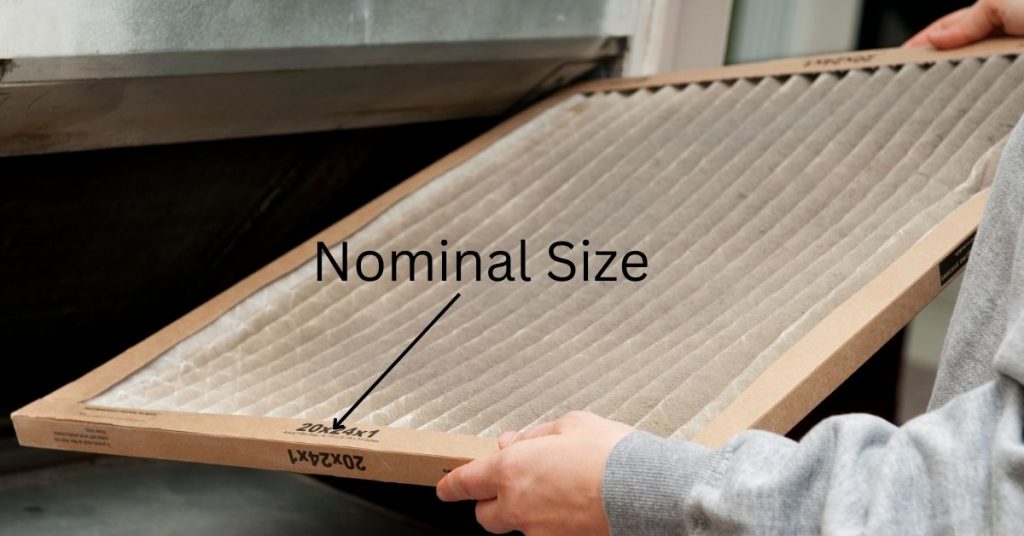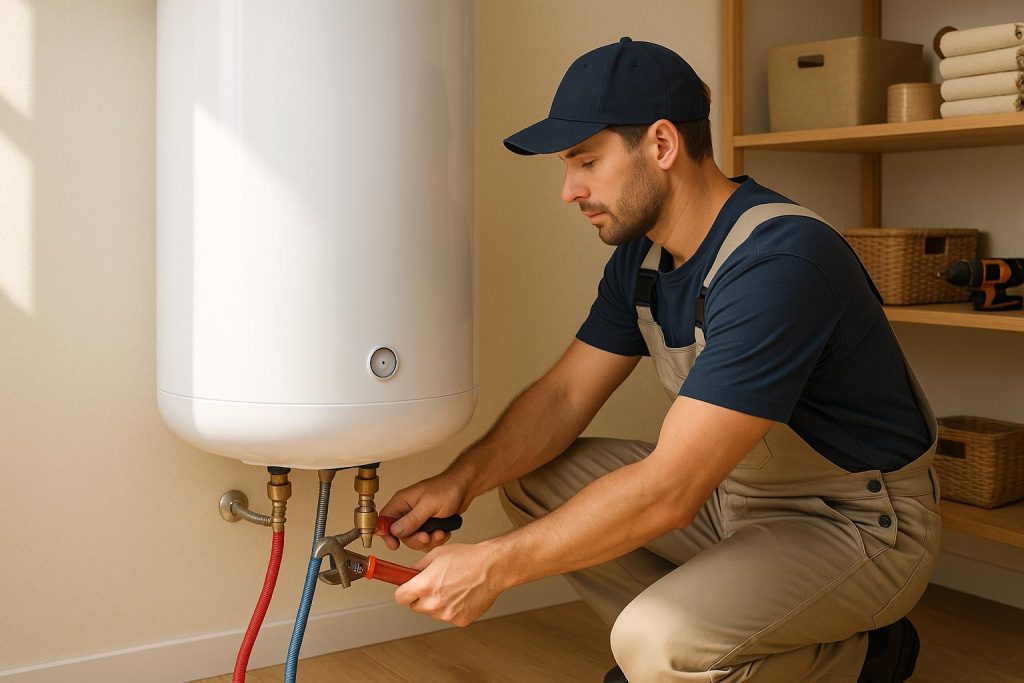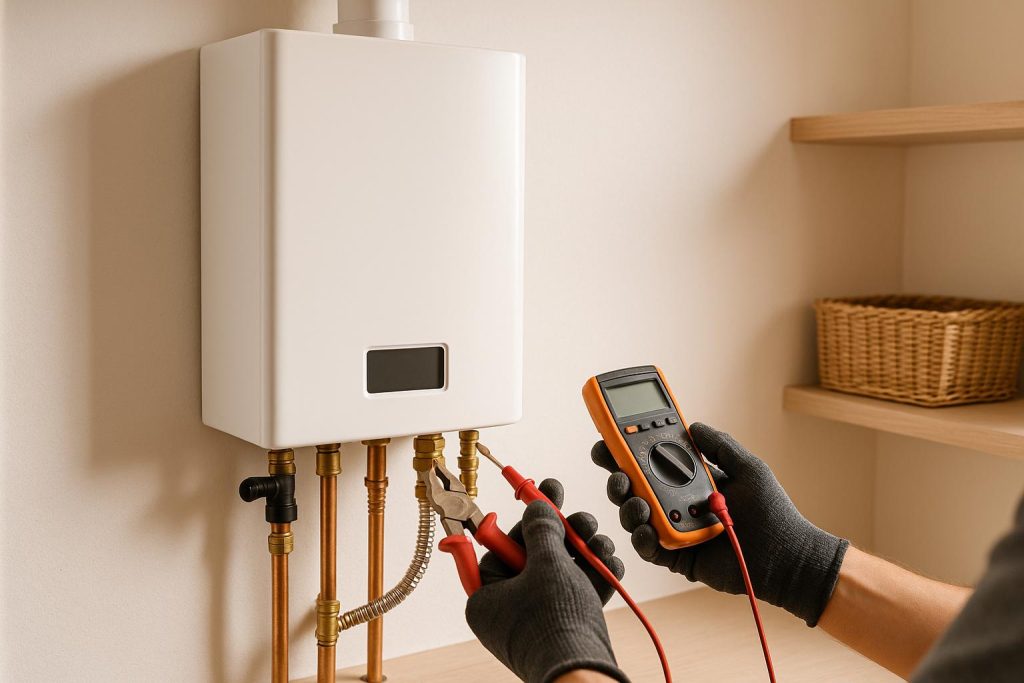
Still not sure what Air Filter Size you need? Selecting the correct air filter size is crucial for maintaining optimal indoor air quality and ensuring the efficient operation of your HVAC system. Here’s a summary of how to determine the air filter size you need:
-
- Consult Your HVAC System’s Manual: The easiest way to find the right filter size is to check your HVAC system’s user manual or documentation. The manual typically provides specifications for the recommended filter size and type.
- Examine the Existing Filter: If you have an old filter in place, examine it for size information. The size is usually printed on the edge or frame of the filter. The format is typically in inches, such as 16x20x1 or 20x25x4.
- Measure the Filter Slot: If you don’t have an existing filter or can’t find size information on it, you can measure the filter slot or the space where the filter is installed. Measure the length, width, and thickness of the space. Round up measurements to the nearest inch.
- Contact an HVAC Professional: If you’re unsure about the size or have difficulty measuring, it’s a good idea to consult an HVAC professional. They can assess your system and provide guidance on the correct filter size.
- Consider Custom Sizes: In some cases, your HVAC system may require a custom-sized filter. If this is the case, you can have a filter custom-made to fit your system’s unique dimensions.
- Check Filter Ratings: While determining the size, also consider the filter’s MERV (Minimum Efficiency Reporting Value) rating, which indicates its filtration efficiency. Choose a MERV rating suitable for your indoor air quality needs and system compatibility.
- Maintain a Regular Replacement Schedule: Once you know the correct filter size, it’s important to replace the filter regularly. Follow the manufacturer’s recommendations for filter replacement intervals to ensure your HVAC system operates efficiently and maintains good indoor air quality.
Nominal vs Actual Air Filter Sizes

| Thermostatic Shower Valves | Pressure Balance Shower Valves |
|---|---|
| Expensive | Cheaper |
| Two handle | One handle |
| Offers volume control without loosing water temperature | No volume control without lose of water temperature |
| Set and forget temperature settings | Constant fiddling of the handle to achieve perfect water temperature |
| Water and energy-efficient | Not water and energy efficient |
To understand the difference between nominal and actual air filter sizes, allow me to use something we all have: shoes. People who wear a size 9 shoes have different sizes of feet but then having shoes in sizes 8.9, 9.1, 9.3 would just be too hectic.
It is the same thing for air filters. As you already know, HVAC systems are made by different brands and even though they try to make the sizes as uniform as possible, there will always be small differences in size.
It would be very confusing for homeowner if a certain manufacturer made a 20.1 x 19.8 x 1 inches air filter while another made a 19.9 x 19.1 x 1 inches filter. Although both of these are correct (actual) sizes of the filters, it makes sense for both manufacturers to label their size as 20 x 20 x 1 inches.
Therefore, the nominal size of an air filter is an estimation (to the nearest whole number) of the actual size of the filter. It makes it easy for homeowners to buy air filters regardless of the brand and it also reduces the total sizes of air filters in the market to choose from.
Usually, the actual size of an air filter is smaller than the nominal size by about ¼ inches. If you therefore measure the size of an air filter and find its length to be 15.75 inches, its nominal size is 16 inches long.
From the above table, it is very easy to tell the nominal size of an air filter by measuring its actual size. There are just way too many air filter sizes for me to put out in a table but the table should guide you in getting the correct filter size you need for your HVAC system.
How Do I Know What Size Air Filter I Need?

A good air filter size should fit snugly inside the air filter compartment/slot. It should be easy to slide it in and out. If the filter leaves big gap between the sides of the slot or if you have to force it in or out, you have the wrong size of air filter.
Below are 4 signs that you are using the wrong size of air filter:
- If you have to force the air filter into the compartment then it is too big.
- If upon pulling out the filter you notice bent corners then it is too big.
- Rattling noises from your system especially near the air filter compartment is a sign that the filter is too small. The air being sucked in is forcing it to move about inside the compartment.
- An increase in dust from your supply air (especially with a new filter) is a sign that the filter is too small, thereby allowing dust to flow past it.
So, how can you tell the correct size of air filter that you need? Well, there are 4 ways to know what size of air filter you need:
1. Check Your Old Air Filter Size
This is the easiest and most straightforward way of telling what size of air filter you need. Most air filters have their size clearly printed on the side.
All you need to do is locate your air filter, turn off the HVAC system (to prevent dust from being sucked in) and then slide it out. Check if you can see the dimensions of the air filter printed on its sides.
In most air filters, there is a nominal size printed in a big print and an “exact size” printed in a smaller print. Use the nominal size to buy a new air filter.

Note: As I mentioned earlier, if the air filter didn’t come out easily (you had to force it out) or it is bent around the corners, then it was a bigger size than needed. You will therefore need to use another method to get the correct filter size.
Tip! When an air filter is bigger that it needs to be, it will restrict the free flow of air to the furnace/air handler. As a result, the system will need to work harder, thereby increasing your energy bills. It also reduces the lifespan of the furnace/air handler.
2. Read You HVAC Manual
If you still have your HVAC user manual, it is highly likely that you will find the recommended air filter size written in it. This is sure-fire way of getting the correct filter size for your HVAC system.
If for any reason you cannot find the manual, you will need to get the tape measure (or ruler) out and actually measure the size of the old filter.
3. Measure the Size of the Old Filter
Before removing the old filter, you will first need to turn off the HVAC system. As you already know, the filter will have trapped a lot of dirt and attempting to remove it with the system still running can result in the dirt being sucked inside (which is what you have been avoiding all that time).
- After turning off the system, remove the filter and place it on a flat surface.
- Use a measuring tape to measure its dimensions (length, width and height).
- If there are decimal points round them off to the nearest whole number to get the nominal size of the filter.
- Use the nominal size to order a new filter.
4. Measure the Size of the Filter Slot
I would recommend that you use this method as a last resort. If upon removing your old filter you discover that it was the long size (either too big or too small) or it has no size label on it, measuring the filter slot is a good (though not easy) way of determining the correct size of the filter.
With this method, just like in when measuring the actual air filter, you will need to measure the length, width and height of the slot. While the length of the slot is almost the same as that of the filter, you will need to be careful when measuring the width and height.
Make sure that you take the internal measurements of the slot and not the external ones. I would expect the width and height of the filter slot to be bigger than that of the actual filter by about 0.125 to 0.5 inches.
With these measurements, it will be easier for you to get the nominal size of the needed air filter size when you go shopping for one. Giving the measurements to a hardware store employee will also make them understand the correct size of filter you need.
How Often to Change Air Filter
Ideally, you need to change your air filter quarterly (after every 90 days). That means 1 filter for each season. However, you may need to change your filter sooner or longer than that depending on several factors such as size, number of people and pets, allergies, MERV rating etc.
If a house has lots of people and/or pets, it means more dirt, fur and dander which clog the filter at a faster rate than a house with only few people and not pets.
Change your air filter after 60 days if you have 1 pet or monthly if you have more than 1 pet. If you or a member of your family suffers from allergies or asthma, you can as well replace the filter on a monthly basis.
This is how often you should change your air filter in accordance to size (thickness):
- 1 to 2-inch furnace filter – 1 to 3 months
- 3 to 4-inch furnace filter – 6 to 9 months
- 5 to 6-inch furnace filter – 9 to 12 months
Check more details on how often to change your air filter in this post.
Wrap Up
Still need help in order to determine the correct air filter size for your furnace/AC? You can always get a free, non committal quote from a local HVAC pro:





